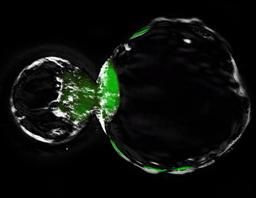
Researchers from the New York Stem Cell Foundation Laboratory have discovered what has previously prevented cloning methods from working properly, thus achieving a self-reproducing line of embryonic stem cells.
There have been many issues with cloning in the past. For instance, large numbers of human egg cells are required for the process, which are difficult to obtain, and there are ethical questions associated with the use of eggs in such research. While the introduction of induced pluripotent stem (iPS) cells have dodged some of the ethical issues, they do not act entirely like embryonic stem cells.
In some cases, egg cells will just stop developing at some point. Even in some instances where adult DNA was successfully inserted into an egg cell to create a clone in animal models, such as Dolly the sheep, they can grow to have health problems and die at an early age.
Now, New York Stem Cell Foundation Laboratory researcher Dieter Egli has found one of the issues that have put a halt to successful cloning in the past.
Conventional cloning methods typically remove the single set of chromosomes from an egg cell before injecting two sets of chromosomes from the adult donor to push the egg into embryonic development. But Egli has found that removing the egg's DNA was the problem.
Using 270 eggs from 16 donors, Egli carried out the traditional cloning method with the exception of extracting the egg's original set of chromosomes. He injected both sets of chromosomes from the adult donor, leaving the egg's set in there as well, and an embryo developed to the blastocyst stage. It consisted of 70-100 cells.
This type of research could help other studies stray away from the use of iPS and go with more "natural" techniques. However, the stem cells produced through this method will have no clinical purpose because of the extra set of chromosomes, which is not compatible with human tissue.
According to Robert Lanza, chief scientific officer at Advanced Cell Technology in Santa Monica, California, the problem with cloning to date is not taking the cell's set of chromosomes out, but the fact that taking the set out requires the removal of an apparatus that enables cell division, and working around that problem is what needs to be focused on in the future.



Reader Comments